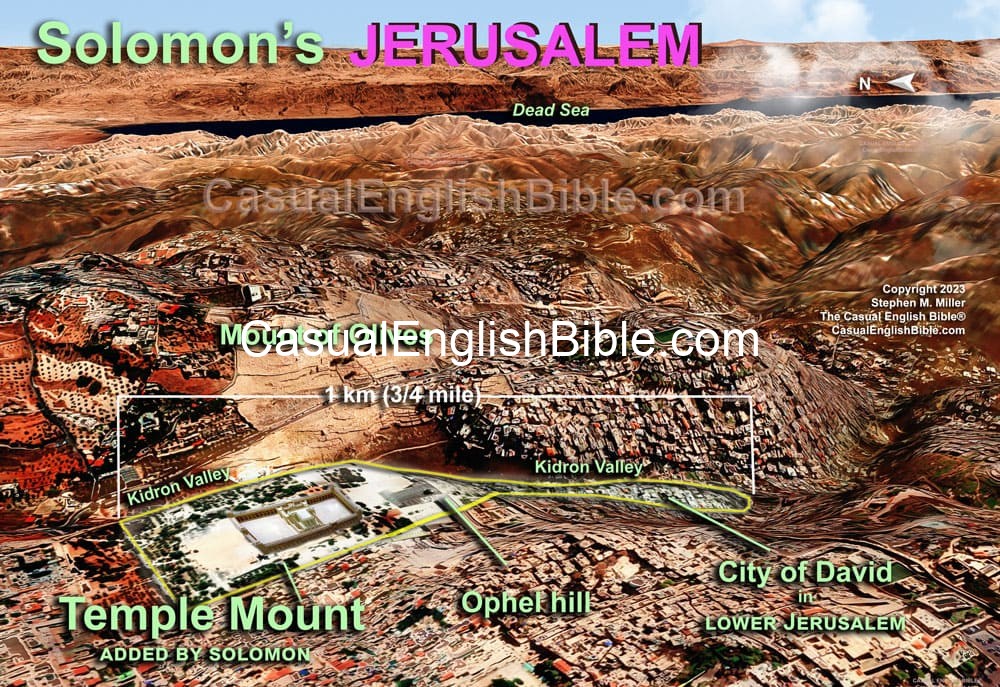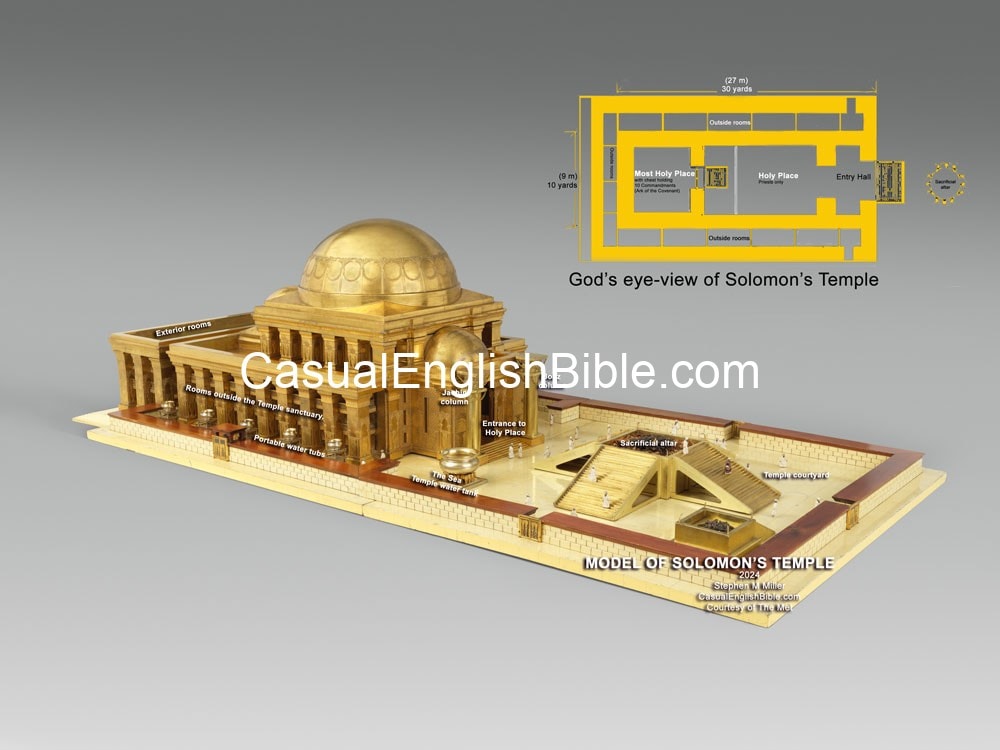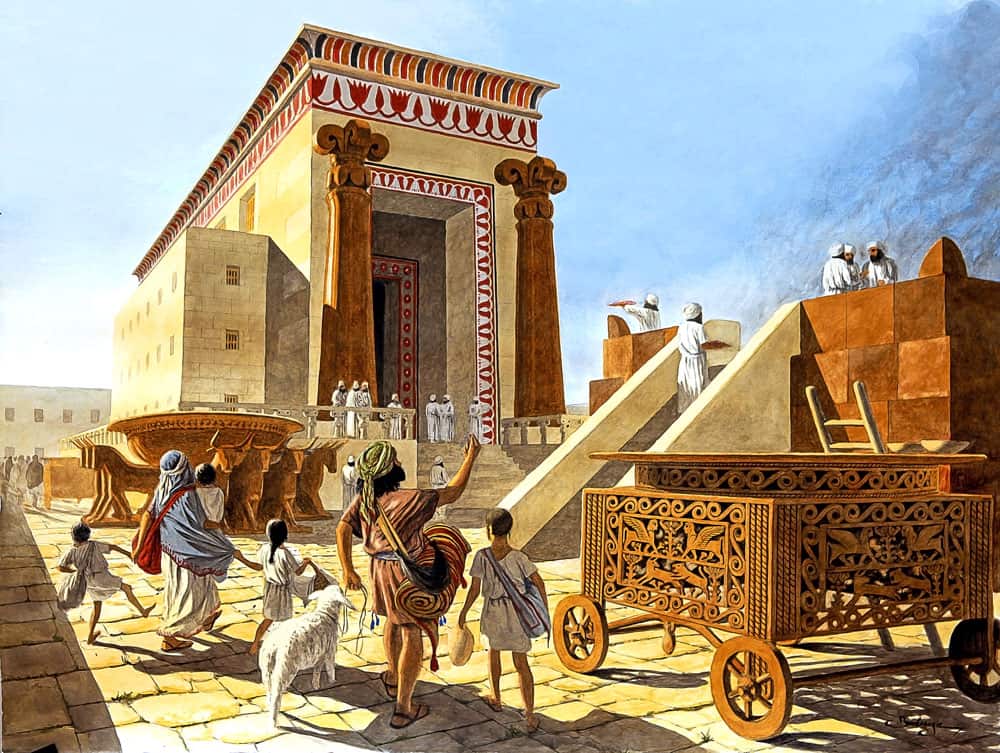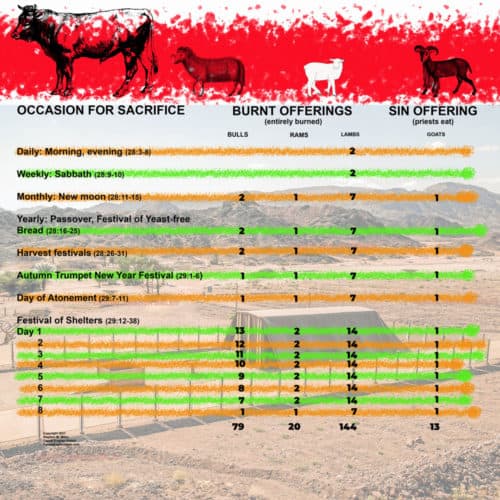2 Chronicles 29
Hezekiah reopens Temple
Hezekiah orders Temple reopened
2 Kings 18:1-3 1Hezekiah was 25 years old when he became king of Judah. He ruled out of Jerusalem for 29 years. His mother was Abijah, Zechariah’s daughter.
2Hezekiah was one of the good kings. He lived his life delighting the LORD, just as his ancestor David had done. 3In the first month of his reign, he reopened and repaired the Jerusalem Temple, which his father had closed years earlier. Hezekiah to priest: get to work
4He called a meeting of the priests and their Levite associates. They met on the east side of the Temple courtyard.
5He said, “Listen to me, all of you from Levi’s tribe. I want you to ritually cleanse yourselves and then cleanse the Temple so people can come here and worship again. Get rid of anything pagan or inappropriate. Make the LORD’s house holy again.
6Many of our ancestors were wicked people. They turned their backs on the LORD and left his house, the Temple. 7Then they closed the Temple, put out the lamps, stopped burning the sacred incense in the sanctuary, and quit offering sacrifices to the God of Israel.
8So the LORD, in his anger at this sin, brought the hammer down on the people of Jerusalem and all of Judah. The punishment he gave them astonished and horrified people. In the end, Judah became the punchline of jokes and the bullseye of ridicule. You know what I mean because you’ve seen it for yourselves. 9Our fathers were slaughtered in battles. And our wives and children were taken away as captives.
10So I’ve decided it’s time to reach out to the LORD, the God of Israel. We need to come to an agreement with him, so he’ll stop being angry with us.
11My dear friends, don’t refuse my request. Please do your job. The LORD chose you for this ministry. You are the only ones who stand before him inside the Temple. You’re the only ones allowed to offer incense there.” Priests prep Temple to reopen
12The Levites got busy right away. Among their leaders:
Kohath family: Mahath son of Amasai and Joel son of Azariah.
Merari family: Kish son of Abdi and Azariah son of Jehallelel.
Gershon family: Joah son of Zimmah and Eden son of Joah.
13Elizaphan family: Shimri and Jeuel.
Asaph family: Zechariah and Mattaniah.
14Heman family: Jehuel and Shimei.
Jeduthun family: Shemaiah and Uzziel. Sixteen days to clean the Temple
15These leaders recruited others from their priestly tribe. They ritually cleansed themselves and went into the Temple to purify it and then reopen it for ministry, as the king had ordered.
16Priests went into the sanctuary and started carrying out everything that didn’t belong there. They hauled it outside of the city and dumped it in the Kidron Valley below.
17They began their work of purifying the Temple in the spring, on the first day of the Israelite new year. [1] They spent the first week outside, cleaning the Temple courtyard. On the eighth day, they went inside and began working there. They spent the next eight days cleaning and ritually cleansing the Temple worship center. Finally, on the 16th day, they finished their work. The Temple was ready.
18They reported back to King Hezekiah and told him, “We’re done. We’ve cleansed the entire house of the LORD, the altar, with all the utensils and furnishings. The table for the sacred bread [2] is cleansed, too, with the utensils we use there. 19We’ve replaced all the utensils that King Ahaz threw away. They are back in their place in front of the LORD’s altar.” Jerusalem Temple reopens for worship
20Right away King Hezekiah called a meeting of all the city officials. Together they went up the hill to the Temple.
21The king arranged for a sacrifice of bulls, rams, lambs, and goats—seven of each animal. He asked that priests descended from Aaron offer these sacrifices to atone for sins [3] of the royal family. He also wanted to atone for sins that took place in the Temple and throughout the nation of Judah.
22Priests slaughtered the bulls and splashed [4] some of the blood on the side of the altar. They did the same with the rams and the lambs. 23Priests led the goats among the people so King Hezekiah and everyone else could lay a hand [5] on the goats. 24Then the priests killed the goats and splashed some of the blood against the altar in a ritual of atonement to erase the sins of Israel. Hezekiah had ordered them to do this for all the people of Israel.
25Hezekiah then arranged for Temple musicians to play cymbals, harps, and smaller harps called lyres. He followed the guidelines set up long ago by King David and the two prophets who spoke for God: Gad and Nathan. 26Levite musicians took their positions in the Temple courtyard, holding instruments David had prepared for the Temple. Priests stood nearby, with their ram’s horn trumpets. Hezekiah: Bring on the music
27Hezekiah told the priests officiating the sacrifices to go ahead and sacrifice the burnt offering. [6] That’s when the musicians began to sing and play David’s instruments, accompanied by the ram’s horns.
28Everyone assembled began to worship. Singers sang. Trumpets rang out. The music continued until the burnt offering was finished.
29When the offering was done, the king and the crowd bowed to express their worship of God. 30Hezekiah and his officials asked the musicians to start singing some of the songs of David and of the songwriter Asaph. The musician bowed in worship and sang with joy.
31Hezekiah said, “You have now recommitted yourself to the LORD. So come on up and worship. Bring your sacrifices and offerings of gratitude.” Everyone in the crowd who wanted to join in brought their own personal burnt offerings, too.
32Burnt offerings for the LORD tallied: 70 bulls, 100 rams, 200 lambs. 33Peace offerings [7] tallied: 600 bulls and 3,000 sheep.
34There weren’t enough priests on hand to skin all the burnt offerings. So some of the Levite associates filled in until more priests could ritually cleanse themselves for service at the Temple. There were more Levites available because they were more inclined to observe the cleansing rituals.
35Worshipers offered more than a lot of burnt sacrifices. They brought offerings of wine along with fat [8] from the peace offering. So, the Temple was back in business as a place of worship. 36Hezekiah and the people were happy about what God had done for them on this day. It all happened so suddenly. Footnotes
129:17Some time between March or April in about 716 BC. People of Israel marked the seasons with a lunar calendar. Every new month started at the first tiny crescent after the new moon. A new moon is when the moon is hidden behind earth’s shadow for one day. The sun, moon, and earth are aligned, with earth in the middle.
229:18This was sacred bread, known as “Bread of God’s Presence” or “Shewbread,” in older English. Every Sabbath day, priests put 12 fresh loaves of bread on the table. A week later, priests ate those loaves and replaced them with another dozen loaves of bread (Leviticus 24:5-9).
329:21The sin offering here refers to something the people of Israel brought to God after they realized they had broken God’s laws. Some scholars say a better translation would describe this offering as the opposite of a sin sacrifice. That’s because the sacrifice is intended to “un-sin” people, to purify them. So those scholars call it a “purification offering.”
429:22Priests splashed blood on four sides of the altar (Leviticus 1:11-12; 6:1-6). Splashing blood on the altar was a bit like splashing water on a person being baptized. It was a public ritual of consecration, essentially saying: “I’m devoted to God.”
529:23Often called “laying on of hands,” this was a Jewish ritual that went back at least to the time of Moses, when he transferred leadership of the Jewish people to Joshua (Numbers 27:18). People of Israel also rested their hands on animals they were about to slaughter though it’s unclear why (Leviticus 8:14, 18, 22). Some speculate it was a symbolic way of saying that the animal would pay the price for the sins of the worshiper. God allowed animals to die for sins that people committed (Leviticus 17:11).
629:27The burnt offering was the most common sacrifice. Worshipers burned the entire animal. Burnt offering instructions: “Take the animal to the north side of the altar. Kill it there on this sacred site of the LORD. Aaron’s sons, the priests, will take some of the blood and splash it on all four sides of the altar. Cut the animal into pieces, including the head and the fat. A priest will set them onto the fire on the altar” (Leviticus 1:11-12). See also Leviticus 1:3-13; 6:1-6.
729:33A peace offering, also called an offering of well-being, is one of several prescribed offerings in Jewish tradition (Leviticus 3). When Jewish people wanted to give thanks to God for something, such as good health or safety, they would sacrifice a sheep, goat, cow, or bull. They would burn part of the animal, including the kidneys and fat covering the intestines. They would eat the rest in celebration, often with family and friends. It takes a fair number of hungry people to eat a cow. But people were eager to eat meat because it was rare in Bible times for common folks to eat meat, many Bible scholars say.
829:35Fat was considered the tastiest part of an animal—juicy and sweet. From the peace offering, God got the kidneys with the fat on the intestines and on the long lobe of the liver (Leviticus 3:4).
Discussion Questions
- Sorry, there are currently no questions for this chapter.
Videos
2Hezekiah was one of the good kings. He lived his life delighting the LORD, just as his ancestor David had done. 3In the first month of his reign, he reopened and repaired the Jerusalem Temple, which his father had closed years earlier.
Hezekiah to priest: get to work
4He called a meeting of the priests and their Levite associates. They met on the east side of the Temple courtyard.5He said, “Listen to me, all of you from Levi’s tribe. I want you to ritually cleanse yourselves and then cleanse the Temple so people can come here and worship again. Get rid of anything pagan or inappropriate. Make the LORD’s house holy again.
6Many of our ancestors were wicked people. They turned their backs on the LORD and left his house, the Temple. 7Then they closed the Temple, put out the lamps, stopped burning the sacred incense in the sanctuary, and quit offering sacrifices to the God of Israel.
8So the LORD, in his anger at this sin, brought the hammer down on the people of Jerusalem and all of Judah. The punishment he gave them astonished and horrified people. In the end, Judah became the punchline of jokes and the bullseye of ridicule. You know what I mean because you’ve seen it for yourselves. 9Our fathers were slaughtered in battles. And our wives and children were taken away as captives.
10So I’ve decided it’s time to reach out to the LORD, the God of Israel. We need to come to an agreement with him, so he’ll stop being angry with us.
11My dear friends, don’t refuse my request. Please do your job. The LORD chose you for this ministry. You are the only ones who stand before him inside the Temple. You’re the only ones allowed to offer incense there.”
Priests prep Temple to reopen
12The Levites got busy right away. Among their leaders:Kohath family: Mahath son of Amasai and Joel son of Azariah.
Merari family: Kish son of Abdi and Azariah son of Jehallelel.
Gershon family: Joah son of Zimmah and Eden son of Joah.
13Elizaphan family: Shimri and Jeuel.
Asaph family: Zechariah and Mattaniah.
14Heman family: Jehuel and Shimei.
Jeduthun family: Shemaiah and Uzziel.
Sixteen days to clean the Temple
15These leaders recruited others from their priestly tribe. They ritually cleansed themselves and went into the Temple to purify it and then reopen it for ministry, as the king had ordered.16Priests went into the sanctuary and started carrying out everything that didn’t belong there. They hauled it outside of the city and dumped it in the Kidron Valley below.
17They began their work of purifying the Temple in the spring, on the first day of the Israelite new year. [1] They spent the first week outside, cleaning the Temple courtyard. On the eighth day, they went inside and began working there. They spent the next eight days cleaning and ritually cleansing the Temple worship center. Finally, on the 16th day, they finished their work. The Temple was ready.
18They reported back to King Hezekiah and told him, “We’re done. We’ve cleansed the entire house of the LORD, the altar, with all the utensils and furnishings. The table for the sacred bread [2] is cleansed, too, with the utensils we use there. 19We’ve replaced all the utensils that King Ahaz threw away. They are back in their place in front of the LORD’s altar.”
Jerusalem Temple reopens for worship
20Right away King Hezekiah called a meeting of all the city officials. Together they went up the hill to the Temple.21The king arranged for a sacrifice of bulls, rams, lambs, and goats—seven of each animal. He asked that priests descended from Aaron offer these sacrifices to atone for sins [3] of the royal family. He also wanted to atone for sins that took place in the Temple and throughout the nation of Judah.
22Priests slaughtered the bulls and splashed [4] some of the blood on the side of the altar. They did the same with the rams and the lambs. 23Priests led the goats among the people so King Hezekiah and everyone else could lay a hand [5] on the goats. 24Then the priests killed the goats and splashed some of the blood against the altar in a ritual of atonement to erase the sins of Israel. Hezekiah had ordered them to do this for all the people of Israel.
25Hezekiah then arranged for Temple musicians to play cymbals, harps, and smaller harps called lyres. He followed the guidelines set up long ago by King David and the two prophets who spoke for God: Gad and Nathan. 26Levite musicians took their positions in the Temple courtyard, holding instruments David had prepared for the Temple. Priests stood nearby, with their ram’s horn trumpets.
Hezekiah: Bring on the music
27Hezekiah told the priests officiating the sacrifices to go ahead and sacrifice the burnt offering. [6] That’s when the musicians began to sing and play David’s instruments, accompanied by the ram’s horns.28Everyone assembled began to worship. Singers sang. Trumpets rang out. The music continued until the burnt offering was finished.
29When the offering was done, the king and the crowd bowed to express their worship of God. 30Hezekiah and his officials asked the musicians to start singing some of the songs of David and of the songwriter Asaph. The musician bowed in worship and sang with joy.
31Hezekiah said, “You have now recommitted yourself to the LORD. So come on up and worship. Bring your sacrifices and offerings of gratitude.” Everyone in the crowd who wanted to join in brought their own personal burnt offerings, too.
32Burnt offerings for the LORD tallied: 70 bulls, 100 rams, 200 lambs. 33Peace offerings [7] tallied: 600 bulls and 3,000 sheep.
34There weren’t enough priests on hand to skin all the burnt offerings. So some of the Levite associates filled in until more priests could ritually cleanse themselves for service at the Temple. There were more Levites available because they were more inclined to observe the cleansing rituals.
35Worshipers offered more than a lot of burnt sacrifices. They brought offerings of wine along with fat [8] from the peace offering. So, the Temple was back in business as a place of worship. 36Hezekiah and the people were happy about what God had done for them on this day. It all happened so suddenly.
Footnotes
Some time between March or April in about 716 BC. People of Israel marked the seasons with a lunar calendar. Every new month started at the first tiny crescent after the new moon. A new moon is when the moon is hidden behind earth’s shadow for one day. The sun, moon, and earth are aligned, with earth in the middle.
This was sacred bread, known as “Bread of God’s Presence” or “Shewbread,” in older English. Every Sabbath day, priests put 12 fresh loaves of bread on the table. A week later, priests ate those loaves and replaced them with another dozen loaves of bread (Leviticus 24:5-9).
The sin offering here refers to something the people of Israel brought to God after they realized they had broken God’s laws. Some scholars say a better translation would describe this offering as the opposite of a sin sacrifice. That’s because the sacrifice is intended to “un-sin” people, to purify them. So those scholars call it a “purification offering.”
Priests splashed blood on four sides of the altar (Leviticus 1:11-12; 6:1-6). Splashing blood on the altar was a bit like splashing water on a person being baptized. It was a public ritual of consecration, essentially saying: “I’m devoted to God.”
Often called “laying on of hands,” this was a Jewish ritual that went back at least to the time of Moses, when he transferred leadership of the Jewish people to Joshua (Numbers 27:18). People of Israel also rested their hands on animals they were about to slaughter though it’s unclear why (Leviticus 8:14, 18, 22). Some speculate it was a symbolic way of saying that the animal would pay the price for the sins of the worshiper. God allowed animals to die for sins that people committed (Leviticus 17:11).
The burnt offering was the most common sacrifice. Worshipers burned the entire animal. Burnt offering instructions: “Take the animal to the north side of the altar. Kill it there on this sacred site of the LORD. Aaron’s sons, the priests, will take some of the blood and splash it on all four sides of the altar. Cut the animal into pieces, including the head and the fat. A priest will set them onto the fire on the altar” (Leviticus 1:11-12). See also Leviticus 1:3-13; 6:1-6.
A peace offering, also called an offering of well-being, is one of several prescribed offerings in Jewish tradition (Leviticus 3). When Jewish people wanted to give thanks to God for something, such as good health or safety, they would sacrifice a sheep, goat, cow, or bull. They would burn part of the animal, including the kidneys and fat covering the intestines. They would eat the rest in celebration, often with family and friends. It takes a fair number of hungry people to eat a cow. But people were eager to eat meat because it was rare in Bible times for common folks to eat meat, many Bible scholars say.
Fat was considered the tastiest part of an animal—juicy and sweet. From the peace offering, God got the kidneys with the fat on the intestines and on the long lobe of the liver (Leviticus 3:4).
Discussion Questions
- Sorry, there are currently no questions for this chapter.











